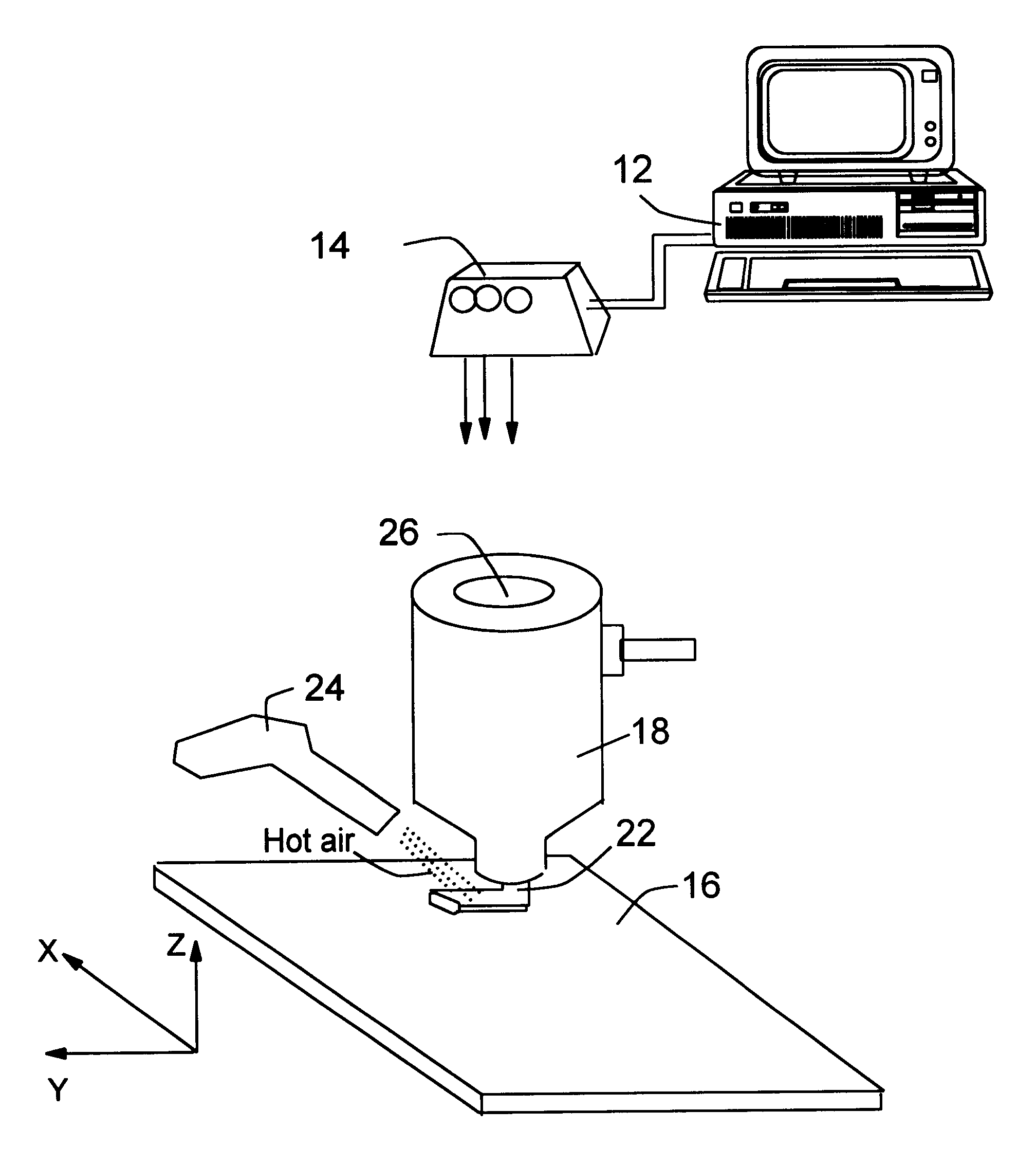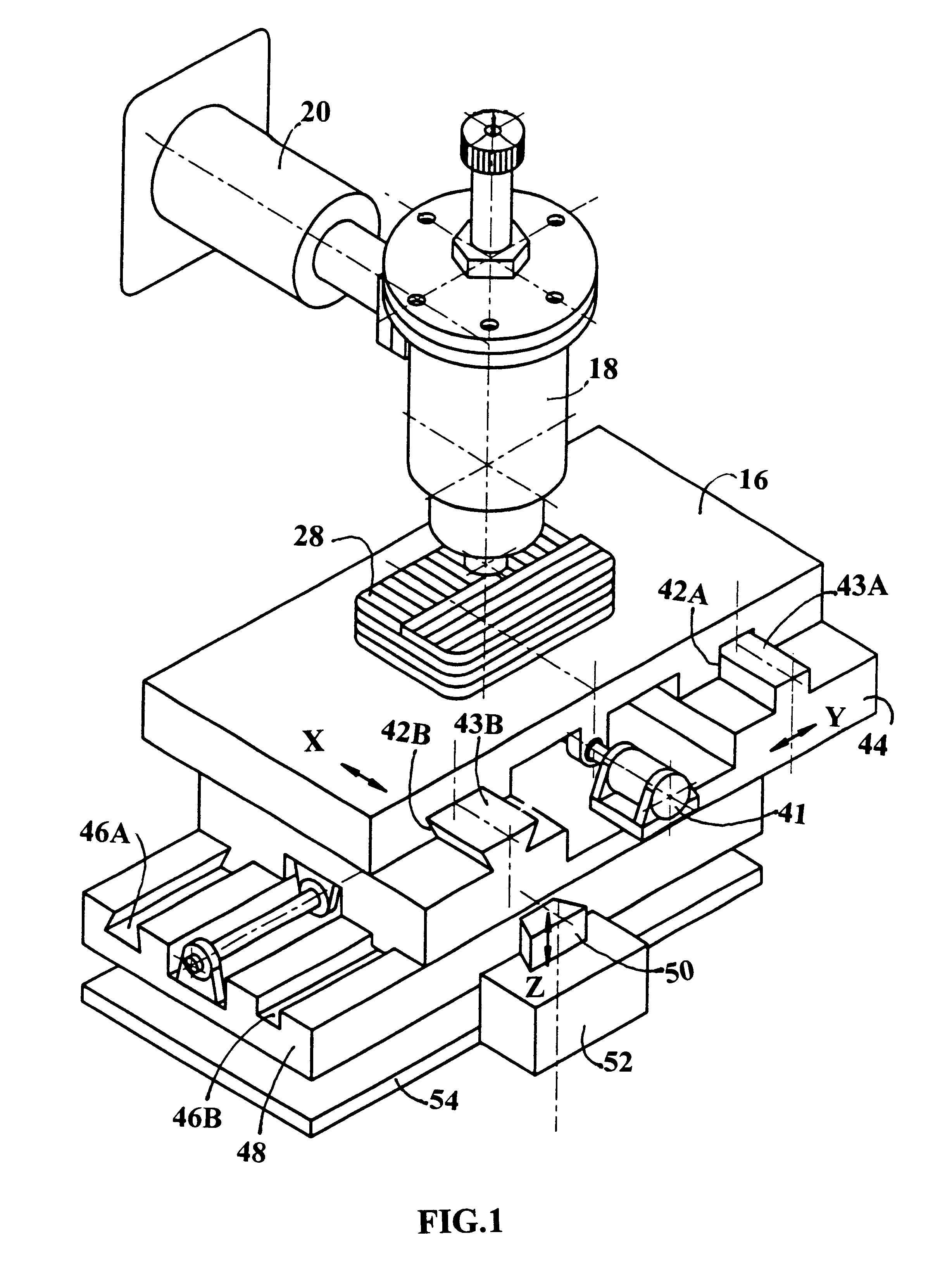Method for rapidly making a 3-D food object
- Summary
- Abstract
- Description
- Claims
- Application Information
AI Technical Summary
Benefits of technology
Problems solved by technology
Method used
Image
Examples
example 2
Corn starch (10 grams) was dissolved in approximately 100 cc of water at approximately 70.degree. C. to form a solution. Approximately 10 grams of finely ground meat granules was added to this solution to increase the consistency (viscosity) of the solution. Such a mixture made a thick paste. This tooth paste-like food composition was extruded through an extrusion-type nozzle to deposit onto a polyethylene-based support member. A hair-dryer was used to help remove a portion of water after the slurry was dispensed from the nozzle.
example 3
Potato starch (10 grams) was dissolved in approximately 100 cc of water and 20 cc of alcohol at approximately 70.degree. C. to form a solution. Additional amount of starch was added to the solution, which was "swollen", but not totally dissolved in this mixture of water and alcohol. This slurry-like food composition was extruded through a syringe-type nozzle to deposit onto a polyethylene-based support member. A hair-dryer was used to help remove a portion of water and most of alcohol after the slurry was dispensed from the nozzle to build a 3-D shape layer by layer. Alcohol was more volatile than water and easier to remove. The incorporation of alcohol accelerated the thickening or rigidization process of the food composition, which was a multi-material mixture.
Type II: The food composition of Type 2 contains a primary body-building material in the form of discrete particles that can be dispersed, but not dissolved in the volatile ingredient, e.g., beacon powder dispersed in water....
example 4
Baking wheat flour (40 g), sugar (5 g), corn syrup (3 g) and yeast (0.7 g) were mixed in 40 grams of water at 50.degree. C. to form a paste. This paste-like food composition was extruded through a syringe-type nozzle to deposit onto a polyethylene-based support member of a 3-D object maker. A hot air blower was used to help remove a portion of water after the paste was dispensed from the nozzle to form a 3-D shape layer by layer. The sugar, yeast and corn syrup were left behind, residing between wheat flour particles and helping to bond together these particles at least tentatively. The fabricated 3-D shape was further heated in a kitchen oven to activate the baking process.
PUM
| Property | Measurement | Unit |
|---|---|---|
| Thickness | aaaaa | aaaaa |
| Composition | aaaaa | aaaaa |
| Concentration | aaaaa | aaaaa |
Abstract
Description
Claims
Application Information
 Login to View More
Login to View More - R&D
- Intellectual Property
- Life Sciences
- Materials
- Tech Scout
- Unparalleled Data Quality
- Higher Quality Content
- 60% Fewer Hallucinations
Browse by: Latest US Patents, China's latest patents, Technical Efficacy Thesaurus, Application Domain, Technology Topic, Popular Technical Reports.
© 2025 PatSnap. All rights reserved.Legal|Privacy policy|Modern Slavery Act Transparency Statement|Sitemap|About US| Contact US: help@patsnap.com



